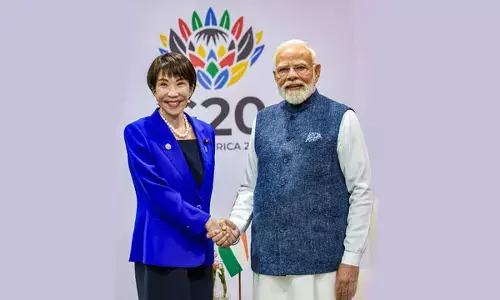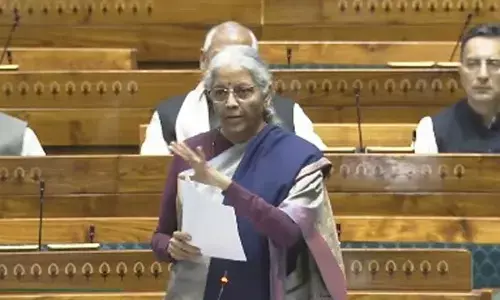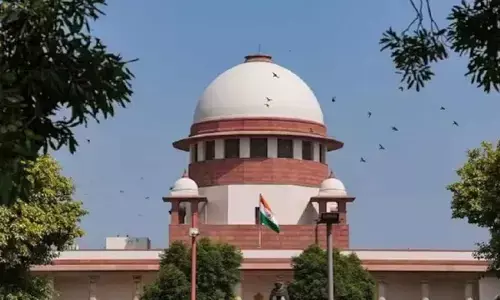Preserving India’s Heritage: Leveraging SMART Goals and GenAI for Monument Restoration on World Heritage Day

Project management, SMART objectives, and GenAI can help ASI restore India's monuments efficiently, sustainably, and authentically, preserving cultural heritage.
Amit Goyal, Managing Director for South Asia at PMI, spoke to The Hans India about the crucial role of project management in restoring India's historical monuments. He emphasised how implementing SMART objectives, collaborative stakeholder engagement, and leveraging technologies like GenAI can enable the Archaeological Survey of India (ASI) to overcome challenges, balance financial efficiency with cultural authenticity, and ensure the sustainable preservation of India's rich heritage.
Dating back over three millennia, Indian civilisation stands as one of the world's most ancient cultural continuities. Throughout these thousands of years, numerous empires, kingdoms, and principalities have risen and fallen across the subcontinent, each leaving an indelible architectural legacy. Today, the Archaeological Survey of India (ASI) shoulders the monumental responsibility of preserving and restoring these historical treasures—not only within India's borders but also in Afghanistan, Cambodia, Vietnam, Myanmar, and the Maldives.
With more than 3,600 monuments under ASI's protection across India, the challenge of restoring these structures to their original splendour represents both an obligation and an opportunity: a chance to reclaim India's ancient heritage and reforge connections with its storied past. Project management offers promising approaches to maximise restoration success while honouring these sites' profound cultural and historical significance.
Initiating Restoration: Assessment and Objective Setting
Every successful restoration project begins with a comprehensive assessment. Professional project managers facilitate detailed research into the monument's original design, construction techniques, materials used, and previous restoration attempts. This thorough investigation defines the project's scope and lays the groundwork for subsequent planning.
Following assessment, project managers establish SMART objectives—Specific, Measurable, Achievable, Relevant, and Time-bound goals that provide clear direction. For example, a SMART objective might state: "Stabilize the south-facing wall of the temple within 12 months while preserving 80% of the original stone carvings." Such precision enables focused effort and measurable outcomes.
Collaborative Stakeholder Engagement
Effective stakeholder management forms the cornerstone of successful restoration projects. During this stage, project managers identify all relevant stakeholders—including the ASI, local communities, historians, conservationists, and funding agencies—and develop strategies to understand and address their diverse needs and expectations. Here, project management expertise enables early identification and resolution of complex challenges such as encroachment, preventing costly delays later in the project.
Project Execution: Breaking Down the Monumental Challenge
Complex restoration projects require meticulous planning and execution. Project managers decompose the overall initiative into smaller, manageable tasks and sub-tasks, facilitating clear responsibility assignment, accurate timeline estimation, and effective progress tracking.
This comprehensive ownership prevents situations like the one experienced at Hyderabad's 430-year-old Charminar, where restoration work stalled as teams awaited favourable weather reports. Expert project professionals anticipate such contingencies, factoring them into project timelines and developing alternative approaches. Furthermore, through continuous collaborative reassessment with stakeholders, project managers adjust plans in response to evolving conditions, ensuring work progresses smoothly despite challenges.
Balancing Financial Efficiency and Cultural Authenticity
In India, resource constraints present significant challenges in monument restoration. Project management methodologies enable realistic budgeting—critical in the Indian context where the average allocation for monument maintenance is just 11 lakhs (approximately $13,500). Project management’s emphasis on reducing waste guides project professionals to use funds judiciously, increasing the likelihood of completing work within or below budget. Equally important is the efficient allocation of human resources, particularly skilled artisans whose shortage has contributed to restoration delays across numerous sites. Through strategic resource allocation, project managers can accelerate restoration efforts, eliminating the seemingly permanent scaffolding that has become an unfortunate feature of many important monuments.
Meanwhile, a parliamentary committee has emphasised the integration of sustainable practices into conservation and restoration projects, making project management more relevant to restoration than ever. Today, project management professionals can leverage a vast community with deep expertise in sustainability and conservation. They can also incorporate innovative yet respectful approaches to monument preservation that align with contemporary sustainability standards while honouring traditional construction methods and materials.
Perhaps the most critical concern in monument restoration is maintaining authenticity. A parliamentary panel has noted that restoration work at many ASI sites "doesn't gel with the original design" and has urged the organisation to "scrupulously adhere to the cardinal tenets of restoration" by retaining original structures rather than replacing them.
Project management professional can harness cutting edge GenAI to bridge critical gaps, thereby creating authentic digital recreations of monuments. These advanced visualisations enable project teams to better understand original designs and ensure faithful representation of India's cultural heritage during restoration processes.
In conclusion, the preservation of historical monuments represents more than mere maintenance of old structures—it is the conservation of cultural identity, historical knowledge, and artistic achievement. Through the application of modern project management techniques, restoration efforts in India can achieve the delicate balance between authenticity and sustainability, efficiency and respect.














